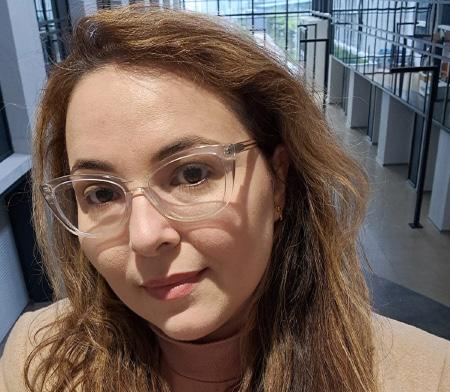
4 minute read
Breaking Barriers, Building Knowledge - Women in Science
Women in Science
BREAKING BARRIERS, BUILDING KNOWLEDGE
Celebrating some of CERI’s Inspiring Women
At the Centre for Epidemic Response and Innovation, many of the projects and breakthroughs taking place are being led and supported by dedicated female scientists and researchers.
Aligning with Women’s Day and Women’s Month 2025, we are celebrating a few of these inspiring women to learn more about their roles, what brought them into science, and how they see their work making a difference – both within CERI and beyond.
Let’s find out a bit more about Dr Nonsikelelo Precious Hlongwa, Dr Cari van Schalkwyk, Dr Yuri Munsamy, Dr Chanelle Mulopo, Mrs Gugulethu Mkhize, and Dr Emilyn Costa Conceição.
Dr Nonsikelelo
Precious Hlongwa
Dr Nonsikelelo Precious Hlongwa grew up in a semi-rural community in Mpumalanga, where she witnessed how health challenges, especially preventable diseases, affected many of her family members – including her parents. She explains that this sparked a deep curiosity about microbes, water, and health. “Even though I had limited access to labs, libraries, or even computers in school, I worked twice as hard to catch up,” says Nonsie. “My passion grew through each academic step, and led to a PhD focused on molecular detection of pathogens in wastewater.”
Dr Chanelle Mulopo
Dr Chanelle Mulopo’s journey into science, particularly health sciences, has been deeply personal and shaped by lived experiences. “Growing up in various low- and middleincome countries, I witnessed stark disparities in access to healthcare. While my family had access to private care, I saw many around me – often my playmates – suffer due to lack of access, especially during a dysentery outbreak that claimed the lives of several children,” she explains. “My brother and I also fell ill, but thanks to private healthcare, we recovered. That moment left a lasting impression on me and sparked my interest in health equity.”

Gugulethu Mkhize
Gugulethu Mkhize thoroughly enjoyed biological sciences as a learner during her basic education years, and always achieved good grades in this subject. “Enrolling for a qualification in science had a lot to do with the influence of my family and the environment I grew up in; there was a strong focus on the fact that STEM subjects are important and will lead to good careers,” says Gugu. After working for few years in the laboratory, an opportunity to join the clinical trials group in a support role of Grant Manager arose. “I was attracted to this opportunity, mainly due to the impact of their research in the community,” she explains.

Dr Emilyn Costa Conceição
Dr Emilyn Costa Conceição’s journey into science started in the Brazilian Amazon, where she was born and raised. “Growing up in a region deeply affected by infectious diseases, I became curious about the biology behind illness and health disparities,” she explains. “This led me to study biology at the Federal University of Pará, and later pursue a master’s in infectious diseases and a PhD in microbiology.”

Dr Cari van Schalkwyk
Dr Cari van Schalkwyk’s fascination with mathematics and health began during her studies in Actuarial Science and Mathematical Statistics at Stellenbosch University (BComm 2006, MComm 2009). “My introduction to epidemiological modelling started during my Master’s project, estimating incidence of recent HIV infection among pregnant women in Zimbabwe, when I joined SACEMA (South African Centre for Epidemiological Modelling & Analysis) initially as a statistician in 2010,” explains Cari. Driven by this interdisciplinary path, she went on to earn a PhD in Epidemiology and Biostatistics from the University of Cape Town, specialising in transmission dynamics of HIV and HPV.

Dr Yuri Munsamy
Dr Yuri Munsamy’s journey into science began at the age of 10, when she became fascinated by iron shavings being drawn to a magnet. “Years later, in my first microbiology lecture, I was captivated by bacteriophages (viruses that infect bacteria) and blown away by the engineering precision of a non-living organism that packs lightly in terms of genetic material,” she says with a smile.











